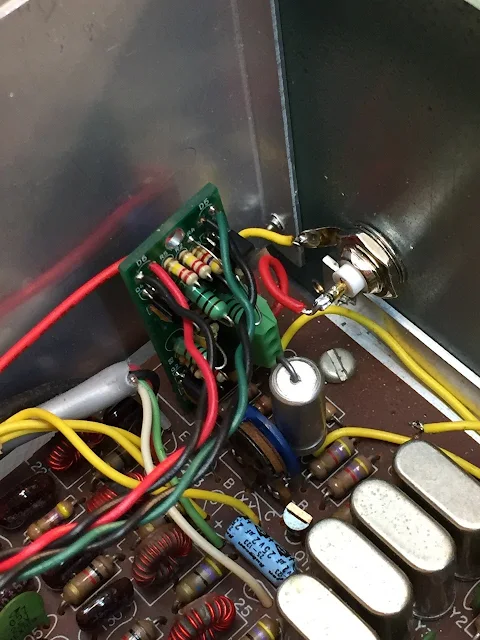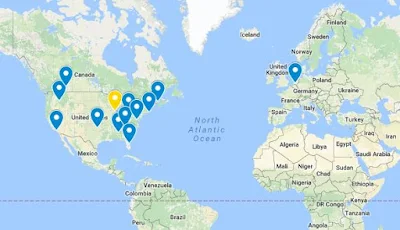Bill -
Enjoyed the recent Hamvention interview with Ed Hare and your comment about him and a Heathkit HW-8 QRP rig. I recently rescued the HW-8 I bought on eBay that had been sitting in my project queue for several years. As I was refurbishing the rig I found that John KC9ON (http://kc9on.com) has several HW-8 mods that are very reasonably priced and I incorporated in the the refresh. They included replacements for the audio amplifier and the T/R relay, the “miniYAK” electronic keyer that I installed internally and built-up a external control dongle for the keyer. Cleaned up the additional audio filter that the previous owner had installed (ancient MFJ CWF-2 op-amp filter, surprisingly still available from the MFJ Vectronics brand, model VEC-820K) and did a complete realignment of course. The T/R replacement includes provision for a red and green LED that indicates that the rig is in the receive mode (green) and transmit (red); I was able to mount them directly behind the relative output meter using a piece of plastic drapery hardware (always pays to keep that kind of stuff!). Finally installed a fresh S-meter mod.
RF output is ok on all the bands except for 15m and I still need to figure that out. Getting rid of the old Molex power connector and replacing it with a Powerpole was a real plus I thought. Have swapped out the PA transistor with several different types but the one the last owner substituted in seems to be the best (ECG488). Have to admit I’ve never been a devoted QRP guy but love the community for it’s technical bent but since I’ve been looking for some new challenges I thought this would be a enjoyable one.
As you’ve pointed out Mike Bryce’s HW-8 handbook is a must have for anyone updating their radio and there is also a seminal 2-part article series in CQ magazine that probably started the mods craze; they appeared in the August and October 1977 issues of CQ.
Here are some pix of the clean up process and shows I’m not afraid to drill holes in a boat anchor to make it more useable!
73 - Dino
Here’s the new audio board installed:
The additional audio filter with the new 5-pole selectivity switch put in by the previous owner…had to add some audio coupling caps and clean up all the wiring. The plastic piece over the meter was from some old drapery hardware and it now holds the RCV/XMT green/red LEDs:
I replaced the original S-meter mod with a proper terminal strip (old parts were just hanging in the air).
Here’s the solid state T/R circuit that replaced the mechanical relay:
























